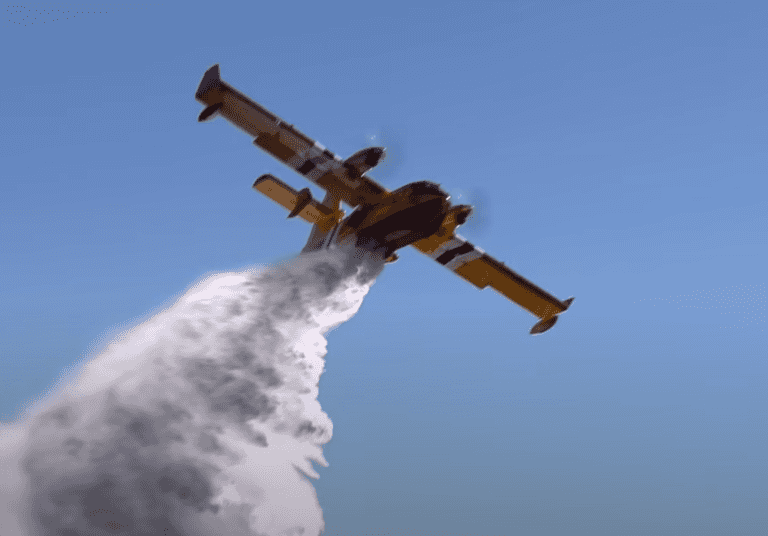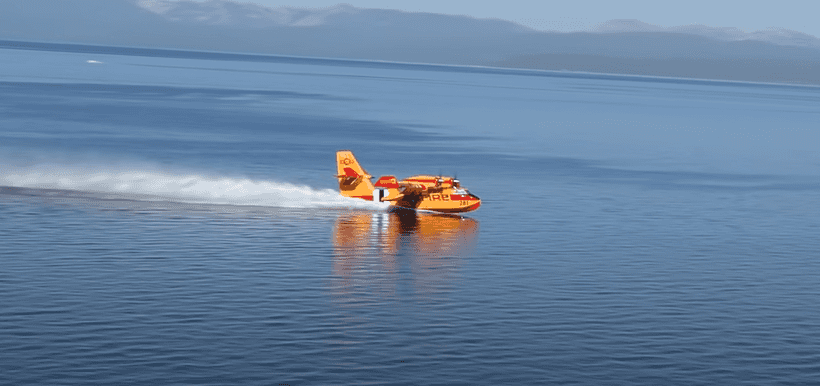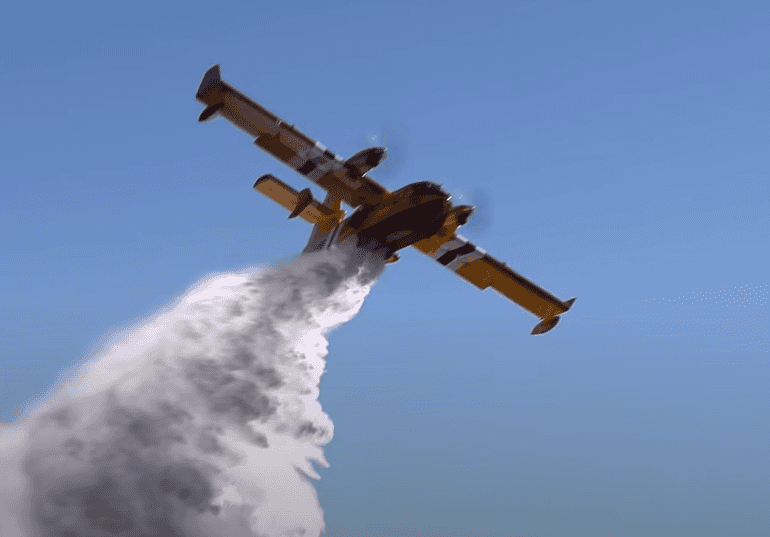
One of the most expensive aerial firefighting aircraft ever developed, the CL 415 enhanced aerial firefighter can drop 1,400 gallons of water on a fire in minutes. This aircraft, although extremely expensive, is the most cost-effective method to fight fires in areas that are extremely hard to reach and do not support the massive logistical effort required to get firefighting equipment in mountainous areas.
See the plane in action in the video below:
The outdated planes used in years past did not compare to the amount of water that the CL-415 is able to drop in one load, totaling roughly 150 to 200 gallons at one time.
This more modern airframe has a wingspan of 93 ft, which is roughly comparable to a Boeing 737. Although comparable in wingspan, the CL-415 is much shorter in length, resembling the military C-130 troop transport plane, which is highly maneuverable and able to adapt to tighter areas and shorter runways.

When the CL-415 comes into a body of water, the plane must slow down to a speed of roughly 100 miles per hour to successfully onboard water into its tanks. The standard cruising speed of the plane is double that at roughly 200 mph.
When the airframe lands on water, there are two intake valves on the plane that immediately begin taking on water and can fully load the plane’s tanks in 12 seconds. Once fully loaded, the pilots retract the probes and the plane is ready to take off from the water.
The aircraft is 11,000 pounds heavier after fully loading its tanks and is dependent on a significant amount of life-generating engines to get it airborne again.

It only takes the Super Scooper two seconds to drop its entire payload of water over an active fire, which gives the pilot an extremely small window to get it right. Other jetliners that are used to fight fires make drops as high as 800 feet, but the Super Scooper can get as low as 100ft above a fire. The low altitude allows the pilots to make quick adjustments when circumstances change while also allowing the Super Scooper to continue firefighting operations from a body of water rather than the more traditional method of returning to an airstrip to refuel.
The aircraft can sustain six hours of continuous operations at any given time before having to refuel, which is why this aircraft is so cost-effective despite the expensive up-front cost to acquire the airframe.
The CL-415 is a technologically advanced platform that offers a creative method to fight fires, providing a unique solution to an environmental problem. The beauty of the aircraft is that it can answer a logistical shortfall that ground crews are unable to address when the location of the fire is remote and difficult to reach through traditional roads and fire breaks.
0 comments :
Post a Comment